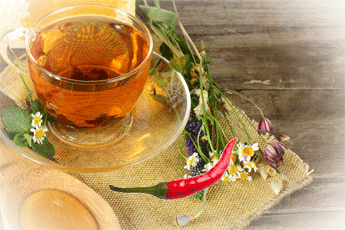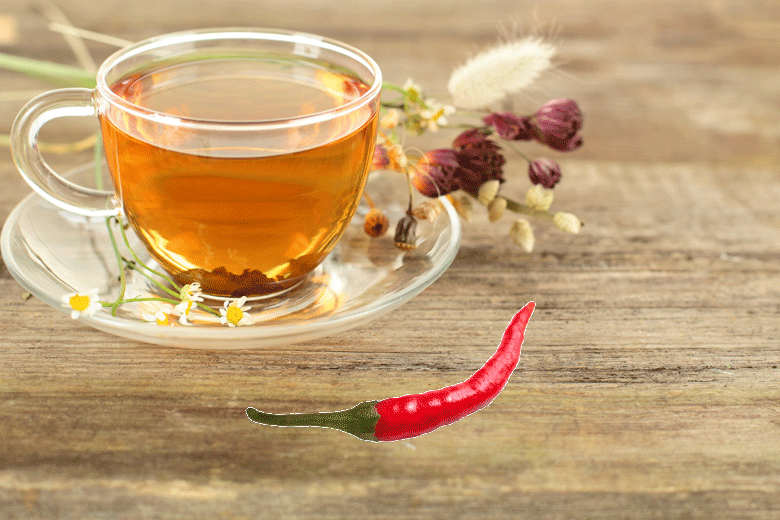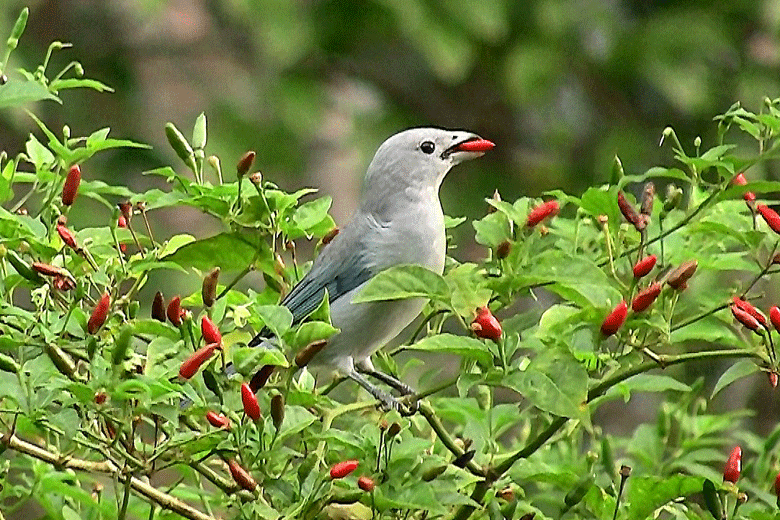Speeding up germination
As with many things in growing Chillies, you will find different schools of thought on various subjects. The soaking of seeds to improve germination is no exception. There are views on how long the seeds need to be soaked for, what liquid they should be soaked in, and a whole lot more. To try and figure out what the real truth is, I thought I would do some research.
truth is, I thought I would do some research.
The first question I wanted to be answered is, is soaking seed necessary at all? According to much of my research, probably not. Seeds can be started successfully, without pre-soaking them. However, pre-soaking definitely improves Chilli growing. It speeds up sprouting and germination rates. And this is not just for any old reason. Soaking seeds emulates what happens in the wild.
In the first place, Chillies have a built-in inhibitor that prevents them from germinating inside ripe fruit. They will not germinate unless nature comes to their aid. When it rains, the inhibitors are washed away. Soaking seeds helps do that. After that, other factors come into play before the seed will germinate.
To tea to not tea?

Different schools of thought
So far, so good. However, this is where you start finding differences of opinion One of the first things growers have different views on is what you should use to scarify seeds. Some advocate the use of water alone. Others prefer tea – camomile or normal teas like English breakfast. Yet others use diluted hydrogen peroxide. The belief is that tea or hydrogen peroxide emulates what happens when a seed passes through a bird’s digestive system. The walls of the seeds get thinned, and this makes it easier for the seed to germinate
So what is best? Begore answering that I need to touch on another area of disagreement. This concerns how long the seeds need to be soaked. Some growers recommend soaking seeds for eight to twelve hours. Others, including world renowned grower Ed Curry of Carolina reaper fame, believe 30 minutes is enough. Yet others might say that say an hour that is all that is required. Personally, I prefer soaking my seeds longer. I soak mine for twelve hours. For me, when you soak seeds in camomile tea (as I do), you have allowed the tannins enough time to do their work and for the seeds to swell.
disagreement. This concerns how long the seeds need to be soaked. Some growers recommend soaking seeds for eight to twelve hours. Others, including world renowned grower Ed Curry of Carolina reaper fame, believe 30 minutes is enough. Yet others might say that say an hour that is all that is required. Personally, I prefer soaking my seeds longer. I soak mine for twelve hours. For me, when you soak seeds in camomile tea (as I do), you have allowed the tannins enough time to do their work and for the seeds to swell.
However, I also have to state that the above only applies to dry seeds. If I am planting seeds directly from a fresh pod, I have found that one hour is enough. When you think about it, when you soak fresh seeds, you are not rehydrating the seeds. What you are doing is washing away the inhibitors that prevent the seeds from germinating. The wall of the seed is already soft, so the soaking is only done for the reason provided. I have had good success applying this principle
What is best?
The link with birds
So back to what is best to use for soaking seeds. Personally, I use weak camomile tea. I make a cup of camomile and let it brew for two minutes. I then take out the teabag and make another cup of tea with the used teabag. After two minutes, I take out the teabag again. I then allow the tea to cool to room temperature. Once this is done, I add the seeds to soak
I have not tried using hydrogen peroxide solution to soak seeds, but I have read good reports on how effective it is. The recommended dose is one tablespoon of 3 percent hydrogen peroxide to one cup of water. The seeds need to be soaked for 30 minutes and washed with fresh water once they have been soaked. Apparently, it does a good job of breaking down a seeds outer shell and speeding up germination. It is certainly something I will try at some point in the future.
The principle behind using these solutions is that they are mildly acidic. As mentioned previously, this emulates what happens to a seed when it passes through a bird’s digestive system. Birds are the Chillies favourite way of dispersing their seeds. It is the reason they are so vividly coloured. They want to attract the birds to eat their pods before they migrate. The birds eat the Chillies, and they pass through their digestive systems, and then dropped many miles away. This is a very effective way to disperse seeds as they are dropped, encased in ready-made fertilizer. This of course gives them a far greater chance of germination.
Something else I discovered when doing my research concerned the temperature of the solution that you should soak the seeds in. Where I previously allowed the water to cool to room temperature. However, I have learned that it is better to soak them in hot water.
I have not tried it but apparently you need to start soaking the seeds in water for at least 35 degrees Celsius. Some even advocate using the hottest water you can get out of your tap. The temperature that should be used however varies from species to species, so it would probably be best to go with a safer option.
Finally
Some believe (as I previously did) that when you soak seeds, the ones that sink to the bottom are the only seeds that will germinate. Since doing my research, however, I have discovered that this is not necessarily true. While sinking to the bottom is an indicator that the seeds have viable embryos and good nutrient stores, it doesn’t necessarily mean that seeds that float are bad. Sometimes they contain air, which will cause them to float. It may also mean that the seeds have less nutrients than their sunken friends. It is worth planting seeds that have not fallen to the bottom of the solution, but as a general rule, germination will just not be as good
Image credit
Alex Popovkin, Bahia, Brazil / CC BY-NC-SA 2.0 /via Flickr
Disclaimer.
This information is provided for informational purposes only. It should be used entirely at your own risk. The blog and the author do not accept any responsibility for any accident or injury, or damage caused directly or in part, from following any information on this website.


